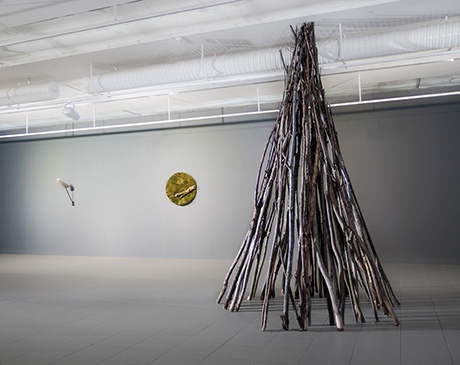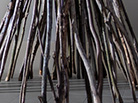MLECZNE ZĘBY — wystawę można oglądać do 24 marca

Artyści biorący udział:
Tomasz Baran
Natalia Bażowska
Michał Gayer
Łukasz Jastrubczak
Szymon Kobylarz
Bartosz Kokosiński
Daria Malicka
Dominik Ritszel
Michał Smandek
Monika Szwed
Erwina Ziomkowska
Kuratorka: Marta Lisok

„Mleczne zęby” — książka zawierająca zdjęcia z wystawy oraz teksty Dwujęzyczny katalog projektu Magdaleny Machno zbiera reprodukcje prac (fotografowanych przez Barbarę Kubską), towarzyszące im teksty artystów i...

Podobno sny o wypadających zębach nie wróżą nic dobrego. Mają zapowiadać zmianę, utratę, chorobę albo nieszczęście dla śniącego. A przecież nie ma nic nienaturalnego w wypadaniu zębów, szczególnie mlecznych, które najpierw zaczynają się chwiać pod naporem języka, potem wiszą już tylko na cienkich żyłkach by w końcu pozwolić się wyrwać jednym zdecydowanym ruchem. To nieuniknione. Nawet jeśli się o nie dba, unika słodyczy i często je szczotkuje. Chociaż nie mają uroku zwierzęcych kłów, ani pokaźnych rozmiarów zębów dorosłego, można je do końca życia przechowywać jak cenny, choć nieco obrzydliwy skarb, starą, zużytą część siebie. Same są niepozorne, małe i zepsute. Za to świat z czasów kiedy jeszcze ma się mleczne zęby wydaje się bardziej malowniczy, rozłożysty, groźniejszy. W nie zaburzonej niczym poważnym dziecięcej nudzie często po raz ostatni, jest miejsce na głębokie obserwacje i analizy. Hiperczułość.
W przeciwieństwie do krajów Europy Zachodniej, w Polsce dzieci, którym wypadają pierwsze zęby, nie odwiedza dobra zębowa wróżka. W zamian za to dwuznaczne trofeum nie zostawia im drobnego prezentu pod poduszką. Nie ma żadnej postaci oswajającej ten proces zapowiadający ostateczną przemianę ciała. Akurat ten rytuał przejścia każde musi rozpracować na własną rękę. Mleczaki wypadają a na ich miejscu przez kilka miesięcy zostają ciemne, nieładne dziury.
Na wystawę Mleczne zęby jedenastu artystów przygotowało: obrazy, rysunki, obiekty, instalacje, video i inne przedmioty, które można byłoby określić jako niepełne, pośrednie, bełkotliwe. Ich powstawaniu towarzyszyły złożone anegdoty i konteksty, docelowo wymuszające na widzu chwilowy powrót do stanu zwiększonej uwagi, kojarzonego z dzieciństwem.
Artyści przywołują stare, pełne luk historie i prywatne mitologie. Inżynieria tych, w większości fikcyjnych, wspomnień pozostaje ukryta. Nie wiadomo dlaczego akurat te zostają uznane za warte odkurzenia, na czas trwania wystawy pozbawione statusu widma.
Na początku pracy przy Mlecznych zębach artyści z dystansem, a później coraz większym zapałem zdrapują wierzchnie warstwy, zdzierają pożółkłe tapety, wertują pamiętniki, wypytują bliskich, przeglądają szkice zapomnianych prac, odłożonych na dno szuflady, nieudanych i pękniętych. Dogrzebują się do zapomnianych doświadczeń i pomysłów: nieuładzonych, często skazanych na straty, prowizorycznych. Po tym jak wywlekają je na światło dzienne, część okazuje się koślawa, trochę wstydliwa.
Wystawa swoim układem nawiązuje do składu gratów czy strychu wytwarzającego swoiste pole grawitacyjne zapomnianych rzeczy. Została zaprojektowana pod kątem funkcjonowania jako ruina, wykopalisko odkryte przez archeologów z przeszłości, jako przestrzeń przypominająca gąbczastą strukturę pamięci, pełną szczelin, błędów, powtórzeń, którą trzeba dopełnić i nadbudować własnymi sensami. Miejsce kuszące obietnicą bezkarnego zapadania się w nie-swoją (niczyją) przeszłość.
Kuratorka: Marta Lisok










